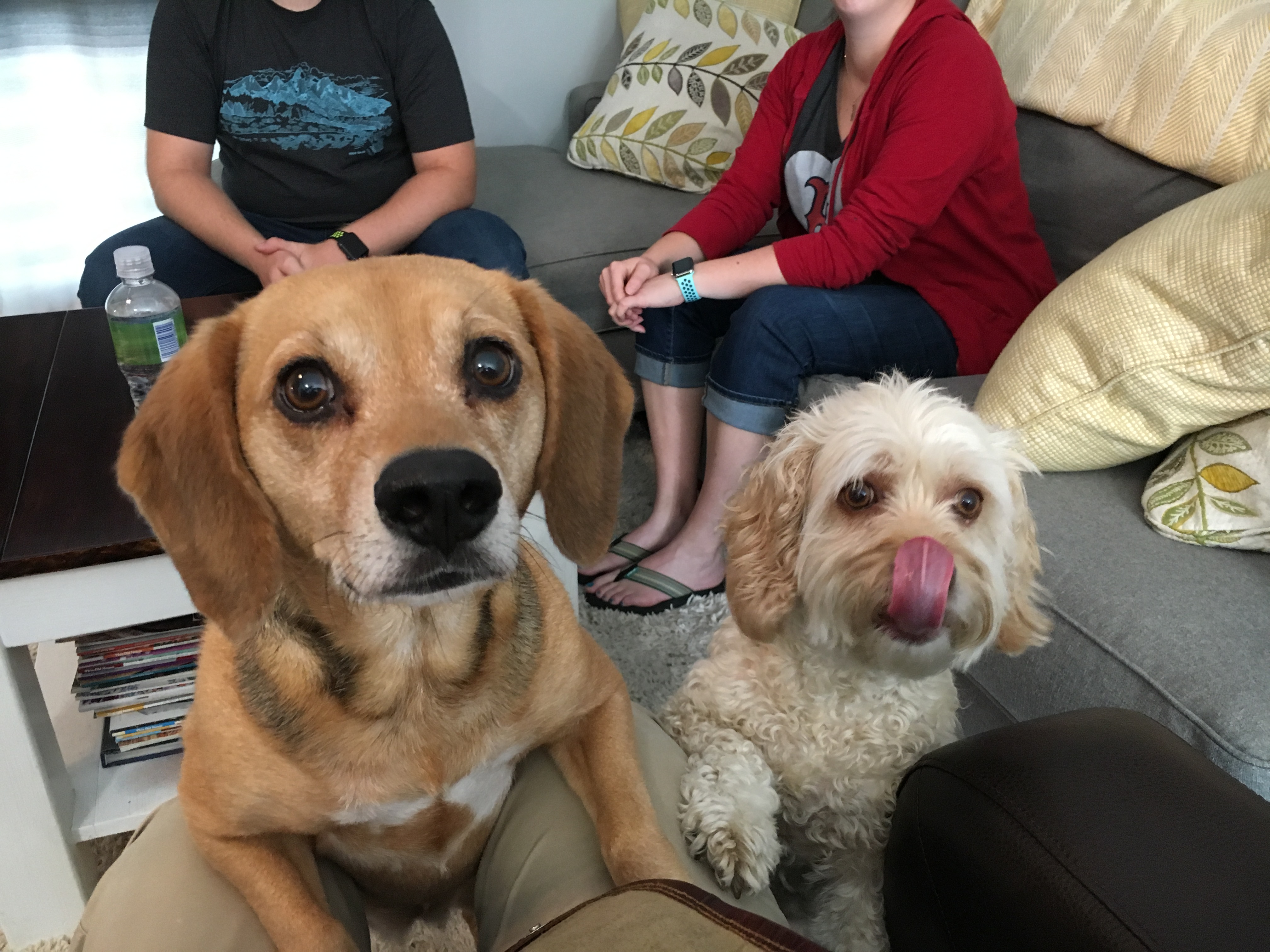How to Use Counterconditioning to Help Repair a Dog Dog Relationship
By: David Codr
Published Date: August 18, 2017
Ginger (left) is a four-year-old Beagle who lives in Omaha with nine-year-old female Cockapoo Marley. The dog’s guardians set up a dog behavior training session with us to get them to stop barking, pay attention better and help Marley feel more comfortable around Ginger who shows infrequent dog aggression to the doodle.
Although Marley came over at the heigh of the excitement for my arrival, she quickly moved away and Ginger remained. This is a subtle yet important interaction to note as it illustrates that Marley still has some uneasiness around Ginger.
I sat down with the guardians to discuss the dog’s backstory, daily life and the dog problems they wanted to fix. I learned the dogs were lacking structure which likely resulted in them both trying to move into the top dog spot. Conflicts about this position are almost assuredly a contributing factor to Ginger occasionally displaying dog aggression going after Marley.
I suggested some rules and ways to enforce them along with ways to add structure to their interactions. Petting with a purpose and passive training are great forms of positive dog training that have big results when done on a regular basis.
Being able to redirect a dog away from something before they get into trouble is a strategy I share with many of my dog behavior clients. My preferred method for this is to train a dog to focus. You can watch me go over this basic dog training exercise in the video below.
Once Ginger can maintain a focus exercise for 20 seconds, it should be strong enough to turn her attention away from Marley before any future dog aggression incidents occur. This is why I frequently show my clients how to train a dog to focus.
It will be important for Ginger’s guardians to recognize her warning signs so that they can use the focus exercise to redirect her before she goes after Marley. Suddenly stopping or freezing is a big one to look for. Staring, either directly at or from the side is another common dog warning. Others include tail going straight up, ear rotating up and forward, hackles (hair on the back) standing up, licking of lips, breathing heavily or holding breath and baring teeth can all be signals.
Its important to note that there may be times where some of these things happen without them being a warning. That is one of the reasons dog communication is difficult for some people to read.
Later in the session I was trying to get the dogs together to snap a pic and the guardian mentioned Marley wont come and sit near Ginger due to her past dog aggression. As a dog behavior expert, this is always a problem I enjoy helping people fix. I wanted to give the guardian a tool that can help her make Marley feel more comfortable around Ginger before I ended the session.
I pulled out some big value treats and used a counterconditioning exercise to start building up a positive association around Ginger for Marley. You can get this free dog training tip by watching the video below.
I love using positive dog training to solve problems like this. Some trainers still resort to force or dominance based methods (like alpha rolls, shock collars, etc) but these all channel the negative and try to get your dog to obey by luring them through the threat of pain. But if you have a dog that is already anxious or fearful, applying pain or force is the last thing you want to do.
By the end of the session, Marley was walking near and sitting next to Ginger, they were starting to follow the new rules on their own and even sitting to ask for attention.
Its going to be important for the guardians to continue to provide structure, especially for Gracie. The damage of the dog dog relationship can be fixed, but if Gracie doesn’t start identifying as a follower first, another attack on Marley is likely.
Now that the guardians know how to read dog body language and provide the dogs with the structure they need through the dog training and dog behavior tips I shared, they should be able to put Ginger’s infrequent dog hostility behind her for good.
We finished things up by shooting a roadmap to success video which you can watch below.
Categorized in: Dog Behavior


